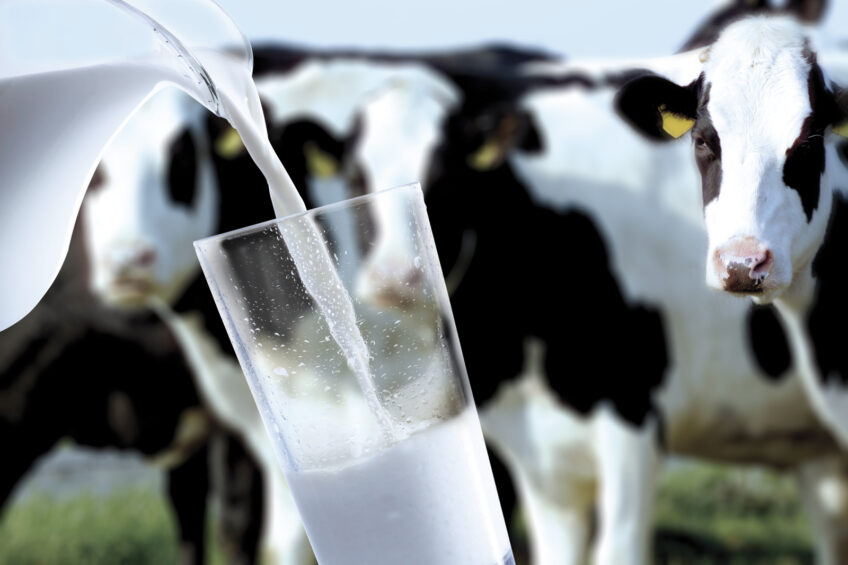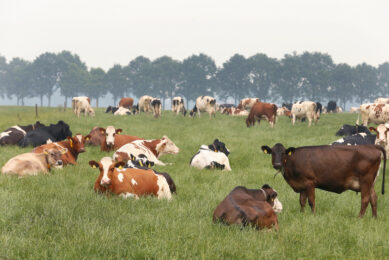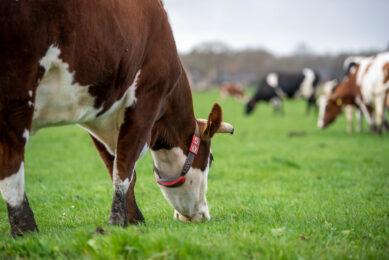Sustainability efforts in US dairy sector

Increased production in the US dairy sector has also led to more awareness in the areas of reducing greenhouse gasses, recycling manure and the minimisation of water use.
This is according to the latestUS Dairy Sustainability Report, published by the Innovation Center for US Dairy.
America’s dairy farmers produce more milk than ever before due to innovations in cow comfort, cow nutrition and health, and breeding. Between 1944 and 2007, milk production quadrupled but uses 90% less cropland, consumes 65% less water and emits 63% fewer greenhouse gases (GHG). Dairy farmers have always applied the latest science, research, technology and tools to do more with less. No-till farming, water recycling and anaerobic digester systems are some of the adaptive, resource-efficient practices highlighted in this report.
Methane reducing projects
One of the focus points for the Innovation Center for US Dairy is to reduce the GHG emissions for fluid milk by 25% by 2020. The Innovation Center and key stakeholders developed a portfolio of greenhouse gas reduction projects in 2009, and since then the projects have evolved, informed by subsequent dairy LCA research and stakeholder input. One of the current projects is ‘The Cow of the Future’, which seeks scientifically sound, economically viable and socially responsible ways of reducing enteric methane emissions through improvements in dairy cow nutrition, genetics and health. In 2014, the Cow of the Future team contributed to research that concluded enteric methane can be more effectively reduced by improving livestock productivity than through the use of feed additives and helped provide a better understanding of the extent of dairy’s contribution to the food supply.

You may also be interested in:
Plant extracts can mitigate methane emissions
Several strategies regarding feeding, feed additives, feed conversion efficiency, microbial interventions or management practices show promising results to reduce enteric methane production from livestock. Here we describe the results with a plant extract in the diet.
Combining food waste and animal waste
The report also touches on anaerobic digesters and the bio-economy. Anaerobic digesters combine organic waste in an oxygen-free environment. The digestion process releases methane gas, which is converted to energy that provides a clean, renewable alternative to fossil fuels. The system recovers the embedded nutrients in the food and manure and creates a nutrient rich liquid that can fertilise crops. Digesters also create a sterile, dry fibrous material for use as a soil amendment or cow bedding. “The multiple benefits of these systems place digesters at the heart of the new bio-economy. Combining food waste and animal waste increases digester based energy production; therefore, fostering partnerships between dairy farms, food companies and retailers is a long term strategy for digester system advocates,” the authors of the report state. The next version of the Stewardship and Sustainability Guide for US Dairy, expected for release in late 2015, will include indicators to help dairy businesses share their approaches to diverting and recovering resources from their waste streams.
Partnerships benefit dairy sector
Also partnerships with several business parties is a great way to increase sustainability awareness in the dairy sector and to accelerate certain projects. In 2014, partnerships, knowledge sharing and actions from farm to table to community continued to address the complex interconnections among food production, nutrition and health, economics and the environment. “Partnering with World Wildlife Fund (WWF) in the Sustainable Food for the 21st Century project, working with Feeding America to increase milk donations to local food banks across the country, and collaborating with federal agencies to develop and launch the Biogas Opportunities Roadmap are just a few examples,” Tom Callagher, CEO of the Innovation Center for US Dairy addressed.
Join 13,000+ subscribers
Subscribe to our newsletter to stay updated about all the need-to-know content in the dairy sector, two times a week.










